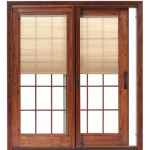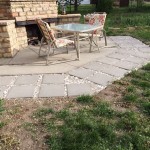Best Sand for Patio Pavers: A Guide to Choosing the Right Material
A beautiful patio is a fantastic addition to any home, providing a relaxing and stylish outdoor space for entertaining and enjoying the fresh air. Patio pavers offer a durable and versatile option for creating a stunning patio, but proper installation is crucial for their longevity and aesthetic appeal. One essential component of patio paver installation is the sand used to create a stable and level base. Selecting the right type of sand can make a significant difference in the overall success of your patio project.
Choosing the best sand for patio pavers requires considering several factors, including the type of pavers, the climate, and the desired outcome. This guide will explore the different types of sand available, their benefits, and their suitability for various patio paver installations.
Understanding the Importance of Sand in Patio Paver Installation
Sand plays a crucial role in patio paver installation, acting as both a leveling agent and a foundation for the pavers. It allows for proper drainage, prevents shifting or settling, and helps maintain the pavers' stability over time. The type of sand used can significantly impact the performance of the patio.
Types of Sand for Patio Pavers
There are several types of sand commonly used in patio paver installations, each with its unique characteristics and suitability for different applications. Here is a breakdown of the most popular types:
1. Play Sand
Play sand, as its name suggests, is commonly used for children's playgrounds. It is fine-grained and smooth, making it comfortable for bare feet. However, its fine texture can lead to compaction, which can hinder drainage and create an unstable base for pavers. Play sand is generally not recommended for patio paver installations.
2. Mason Sand
Mason sand is a common choice for various construction projects, including patio paver installations. It has a medium grain size and good drainage properties, making it suitable for creating a stable and well-drained base. The medium grain size provides adequate support for pavers while allowing for proper drainage. Mason sand is typically a cost-effective option for patio paver installations.
3. Pea Gravel
Pea gravel, characterized by its larger, round pebbles, offers excellent drainage and stability. It can provide a more natural aesthetic than other types of sand. However, its larger size can make it challenging to achieve a perfectly level surface and can be harder to walk on without shoes.
4. Polymeric Sand
Polymeric sand is a specialized type of sand that contains polymers that bind together when wet, creating a hard and durable surface. It is ideal for filling gaps between pavers, preventing weeds and pests from growing through. Polymeric sand is often used in conjunction with other types of sand to create a stable and weed-resistant patio base.
Choosing the Right Sand for Your Patio
The best sand for your patio paver installation depends on several factors:
1. Paver Type
The type of pavers you choose will influence the best sand type. For example, natural stone pavers tend to have irregular shapes and sizes, making a well-compacted base with mason sand or pea gravel essential. Concrete pavers generally have more uniform shapes and sizes, allowing for the use of a wider range of sand types.
2. Climate
The climate where you live plays a crucial role in selecting the right sand. In areas with heavy rainfall, using sand with good drainage properties, like pea gravel or mason sand, is essential to prevent water from accumulating beneath the pavers. In dry climates, sand with good compaction properties, like mason sand, can help prevent shifting.
3. Desired Outcome
The desired outcome for your patio determines the sand type. If you want a smooth and even surface, a fine-grained sand like mason sand is suitable. For a more natural aesthetic, pea gravel or a blend of sand and gravel can be used.
Conclusion
Choosing the right sand for your patio paver installation is crucial for creating a functional and aesthetically pleasing outdoor space. This comprehensive guide has provided you with the information you need to select the best sand type for your specific needs, paving the way for a successful and long-lasting patio project.

Sand For Pavers Top 10 Facts Everyone Should Know The Paver Sealer Store

Sand For Pavers Top 10 Facts Everyone Should Know The Paver Sealer Store

What Kind Of Sand Goes Under Pavers

Applying Polymeric Sand To An Existing Patio Or Walkway Sakrete

Sand For Paver Joints Which Is The Best Js Brick Pavers

Polymeric Paver Sand Bagged Joint Mutualmaterials Com

Sealing Pavers With Sand 10 Expert Tips From Top Paver Companies The Sealer Store

Best Sand For Pavers Hello Gravel

Kiln Dried Sand For Block Paving How To Use Joint Pavers

Sand For Pavers Top 10 Facts Everyone Should Know The Paver Sealer Store








